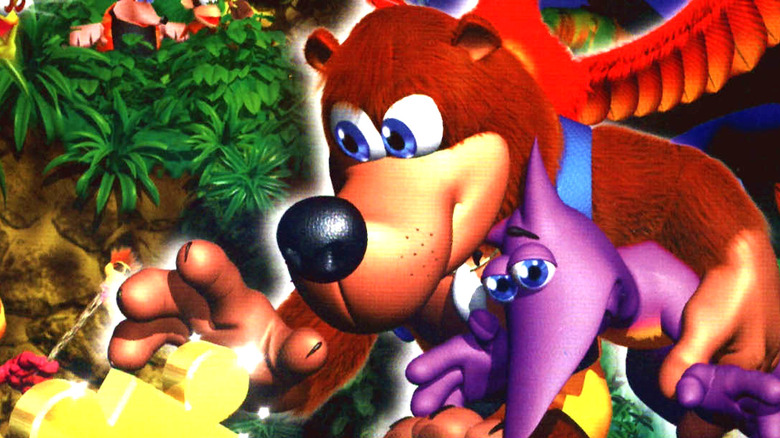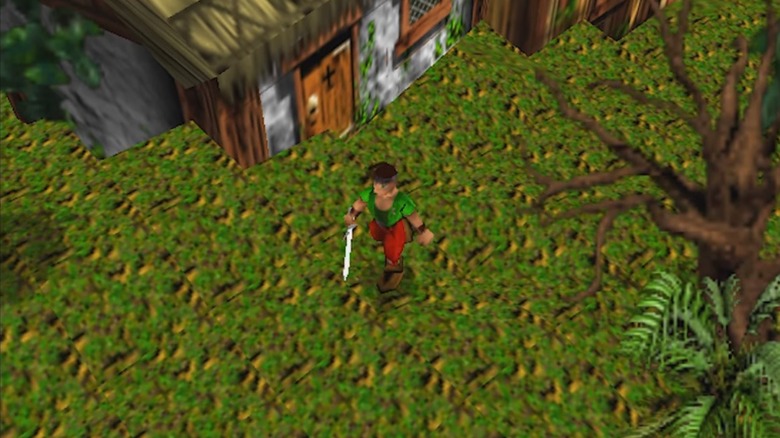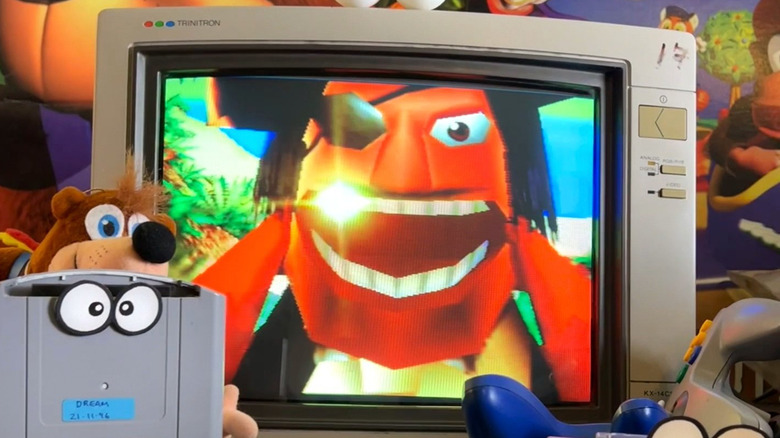N64: Fabled Banjo-Kazooie Predecessor 'Dream 64' Is Real (& You Can See It)
It's practically impossible to count how many games were either canceled during their development or never released. Not all canceled games utterly disappeared with time, though, as concepts from these titles were often used in other projects by the same studios. "Mario 128," for example, was long thought to be coming to the GameCube as a successor to "Mario 64" following a successful tech demo of the new console at Spaceworld 2000. "Mario 128" never came to market after all the hype, but the ideas that the devs played with — like controlling hundreds of characters or the planet-like setting seen in the demo — were used in games like "Pikmin" and "Super Mario Galaxy."
Rare, now owned by Microsoft, was particularly well-known in the 1990s for classics like "Donkey Kong Country," "Banjo-Kazooie," and the relatively controversial "Conker's Bad Fur Day." For years, fans of the company's nostalgic catalog have known of something called "Dream 64," one of Rare's many canceled projects, and one that predates its other 3D games. Thanks to Rare co-founder Tim Stamper, Rare fans have finally been treated to actual footage of this "Banjo-Kazooie" predecessor and a ton of new information about what might have been.
Arrr....! So it's true... Dream 64 does exist after all...!#intimsworld #nintendo64 #snes #Nintendo #dream #banjokazooie #dream64 pic.twitter.com/7UPSdQ0YQg
— Tim Stamper (@InTimsWorld) April 8, 2023
Project Dream has popped up a few times over the years, including about a decade ago when Rare audio designer Grant Kirkhope posted an elaborate behind-the-scenes tale of the game's development on his personal blog. Until now, Rare fans have only had screenshots of this long-rumored game, but Dream 64 is real after all, and Stamper's posts finally gave fans an in-depth look into this lost title.
What happened to Dream 64, and how did it influence Banjo Kazooie?
According to a 2012 Gameinformer article, "Dream" was announced in 1995 and was meant to launch as a relatively cartoony Super Nintendo Entertainment System title. Kirkhope's post revealed that the team behind "Donkey Kong Country" were working on "Dream" when he arrived at the company and that it was planned to be Rare's biggest title on the SNES. As "Dream" started getting more and more ambitious, it proved too large for the SNES to handle, and "Dream" was brought to the N64 instead with a more realistic style.
Kirkhope wrote that "Dream" was originally meant to be a huge RPG, but other collaborators on the project like Chris Stamper and Dave Wise left to work on bigger projects in the works at Rare, like "Diddy Kong Racing." He was left with "Dream" all to himself, but the "final nail in the coffin" for "Dream" — or at least for its original vision — was the team's reaction to "Conker's Bad Fur Day," which was in development at the same time. "I remember Tim (Stamper) trooping us all across the courtyard to look at 'Conker' and our hearts all sank as 'Conker' was really good," Kirkhope wrote.
To fix framerate issues in "Dream," the team switched gears and tried the same methods used in "Conker," and it made the game run much better. The boy hero was swapped for Banjo, who got his backpack — and partner Kazooie — later on. The was totally converted to a platformer with Banjo as the main character — thus, "Dream" was no more.
New footage shows Dream's Captain Blackeye and a treasure chest
Despite the game's total conversion to "Banjo-Kazooie," Kirkhope wrote that plenty of the more than 100 songs he created for "Dream" ended up in other titles. Only a handful of screenshots were shown of the lost N64 game in the past, the most well-known being a shot of the boy hero — named Edison — standing against a gloomy village backdrop. It was reportedly a game about Edison taking on pirates, including their leader Captain Blackeye. Thanks to Chris Stamper, fans finally got a look at the game in motion and Captain Blackeye himself.
Captain Blackeye actually showed up in "Banjo-Kazooie" as a photograph, but seeing him in motion — and with voice acting — feels completely different. In Stamper's first post, the polygonal Captain Blackeye is seen leaning in, mouth agape. It's much more cartoony than previous screenshots, too, which could indicate this version of "Dream" dates from around when the game was being converted into "Banjo-Kazooie."
His second post was a 15-second-long clip, in which the camera pans over Captain Blackeye and an open treasure chest. It closes as the pirate exclaims, "Arr, so it's true then! The Nintendo 64 treasure does exist after all." Then he laughs as the camera pans out.
This version was probably for the Nintendo Shoshinkai show 1996#intimsworld #n64 #Nintendo #Dream #Pirates #TREASURE pic.twitter.com/HRm6eOfV4x
— Tim Stamper (@InTimsWorld) April 9, 2023
Stamper said he thinks this version of the game is from the Nintendo Shoshinkai Show in 1996, which would mean the game was still developed as "Dream" well into its second year. Hopefully, Stamper will reveal more footage from this once-lost game, perhaps giving more insight into the development of "Banjo-Kazooie."



